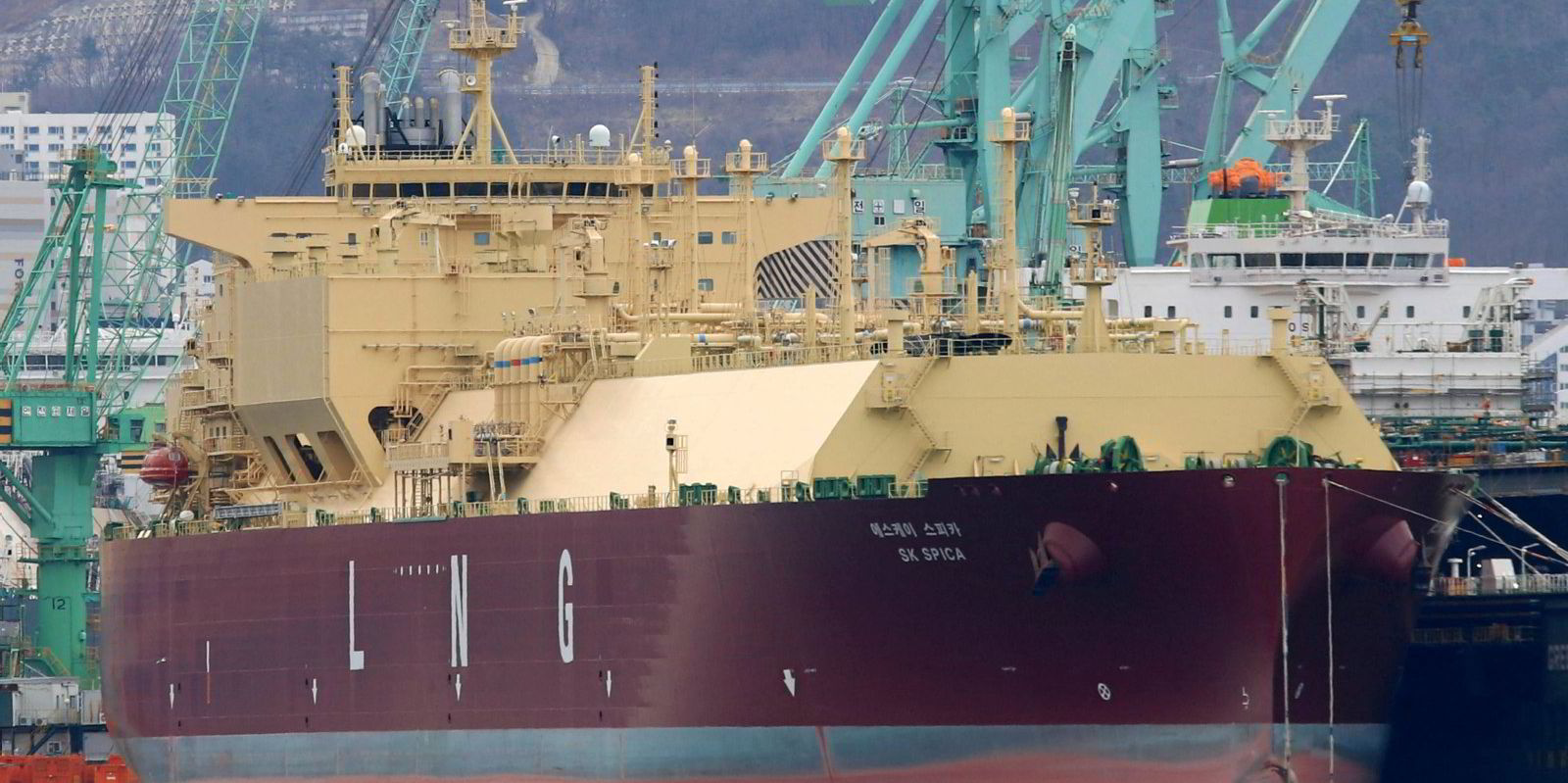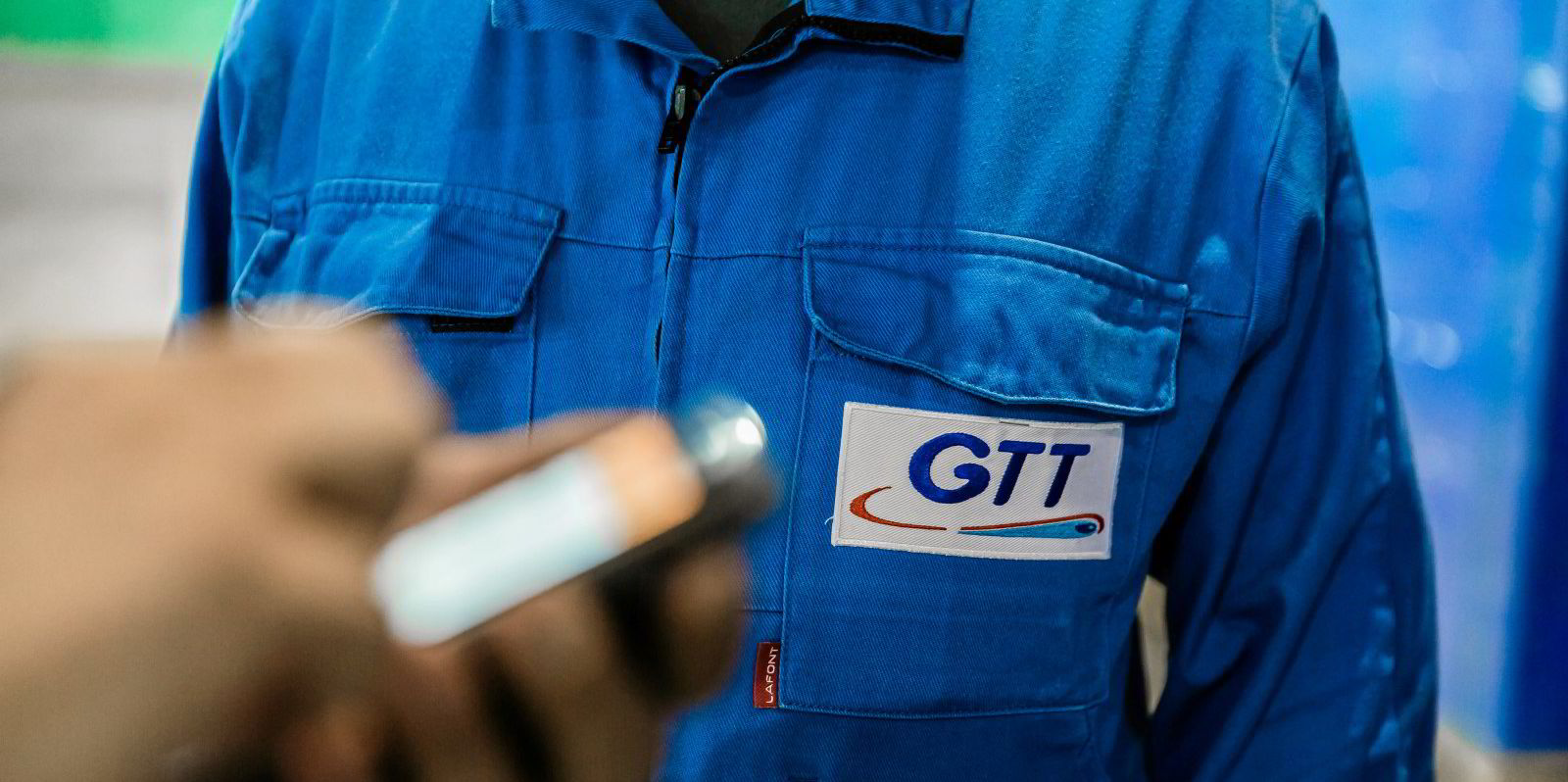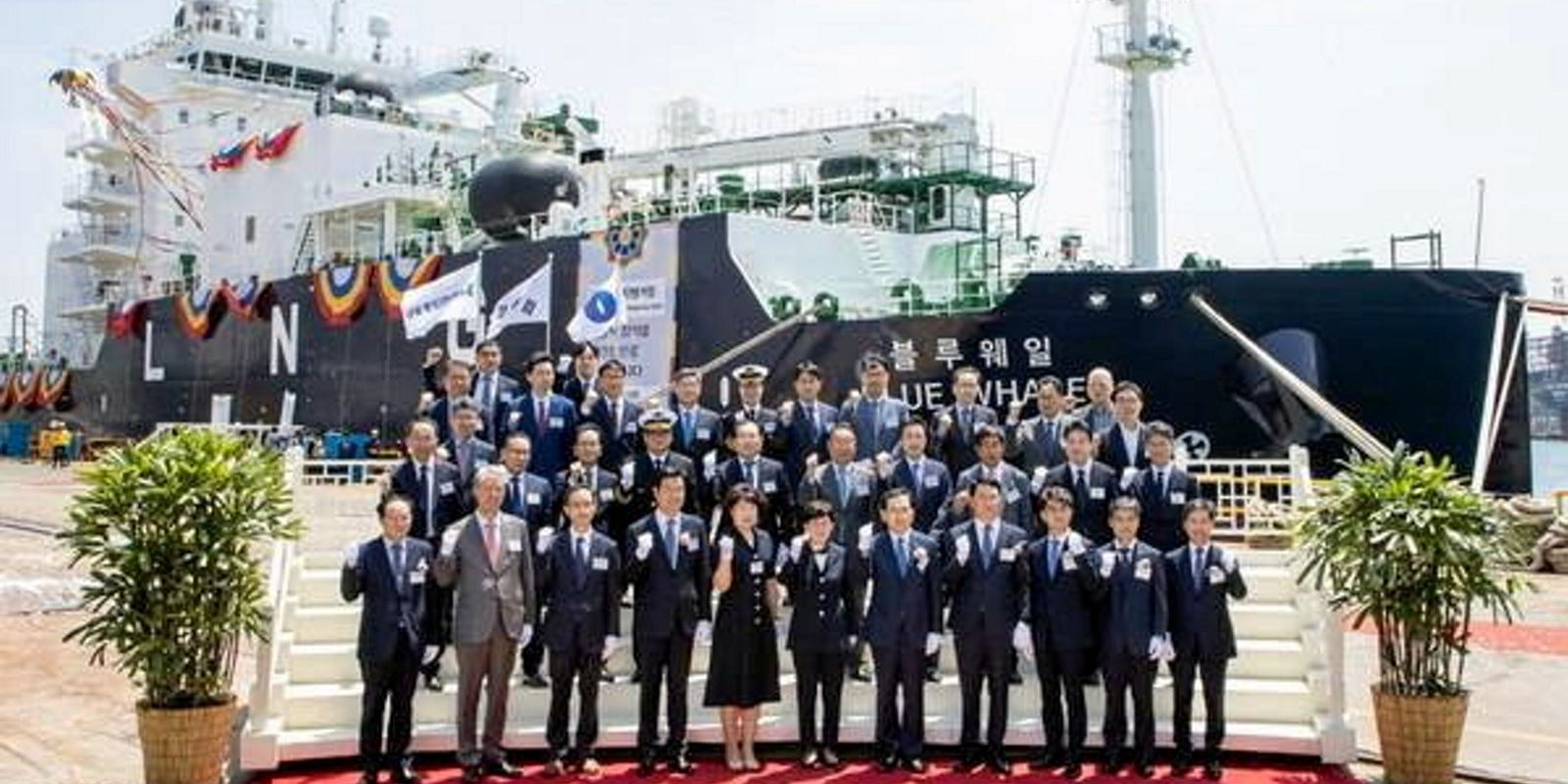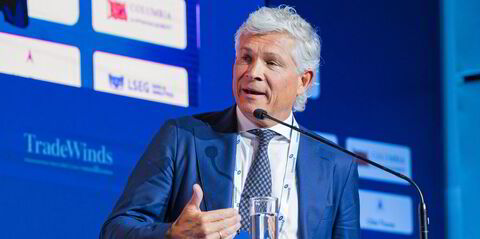Two five-year-old South Korean-built LNG carriers constructed with domestically designed KC-1 membrane-type cargo containment systems will need to be rebuilt, repurposed or scrapped to lift them from their state of limbo, experts say.
Those following the 174,100-cbm SK Serenity and sister ship SK Spica (both built 2018), which have spent the bulk of their lives either under or awaiting repair after defects were found in their Korea Gas Corp-designed systems, told TradeWinds that neither vessel would return to trading unless repairs can be agreed.
One source indicated proposals to use the ships as floating storage units would likely run up against the same technical issues.
He revealed that there have been suggestions that the ships’ containment systems could be replaced, but this would prove very costly — perhaps even prohibitively given their age — and a lengthy process when yards are full with newbuildings.
Legal rows continue over the vessels between all parties: containment system designer Kogas’ KC LNG Tech arm, shipbuilder Samsung Heavy Industries and charterer SK Shipping.
However, to complicate matters, sources said it appears the duo were bareboated to SK Shipping by separate special purpose SHI entities.
South Korean press reports detail a recent court ruling by the Seoul District Court that ordered state-owned LNG buyer Kogas, whose spin-off arm KC LNG Tech designed the containment system, to pay KRW 1,154bn to SK Shipping and KRW 72.6bn to SHI to cover the losses incurred after the two companies filed claims against Kogas for design defects.
Other reports said Kogas had racked up nearly $150m over the four years from 2018 to 2022 in payouts for repair work and costs to charter alternative tonnage.
The SK Serenity and SK Spica were meant to be flagships for South Korea’s KC-1 system, which was designed to rival French competitor GTT’s widely used Mark III system.
The SK Serenity lifted two cargoes from the US before ice was found on its hull, suggesting a possible cargo leak, and the ship was pulled from service. The SK Spica never loaded a shipment.
Both ships have been at SHI’s yard on Geoje Island. Some repairs on the vessels have been made, and ship-tracking data has shown the vessels making periodic journeys from the yard — some of which were later understood to be for trials.
Ongoing disputes
Work started on the SK Serenity in late 2019. At one point, KC LNG Tech told TradeWinds that this vessel would be returned to service in 2021, with its sister ship to follow the next year.
But, those with knowledge of the two LNG carriers said the legal disputes between the parties remain ongoing.
Two 7,500-cbm, Kogas-chartered LNG carriers have been fitted with the KC-1 system and are used to ship cargoes from South Korea’s Tongyeong LNG terminal to the southern resort destination of Jeju Island.
In May, Korea’s HD Hyundai Heavy Industries delivered a 7,500-cbm LNG bunker vessel newbuilding — the Blue Whale. The $42m newbuilding is the first ship to be fitted with a KC-2 membrane-type cargo system, which is the next version of Kogas’ KC-1 design.






